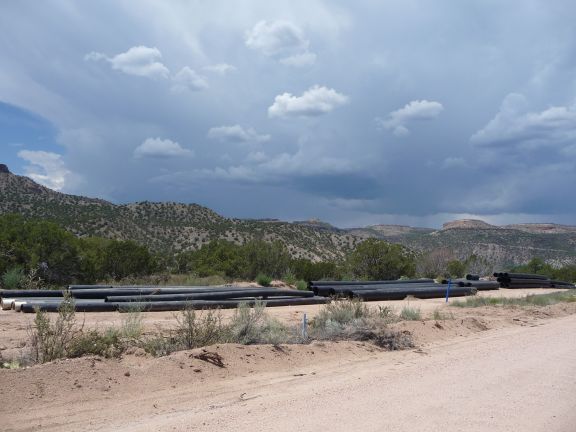If that is all there had been to the ordinance, development would have been stopped in its tracks. There is never any extra water. There was, however, an important loophole. Anyone wanting to build a new house or even a new subdivision could bureaucratically “create” new water by paying to replace water-guzzling appliances in existing homes or businesses with more efficient models. To build a new house, no matter how large, one would have to retrofit between eight and twelve old toilets, depending on the size of the lot. That would supposedly make up for the entire amount of water the new house would consume.
The construction industry was so pleased with this fiction (the alternative was a building moratorium) that Mayor Larry Delgado, whose tie-breaking vote led to passage of the bill, was honored by the National Builders Association at an annual convention in Las Vegas, Nevada. (Please see item 3 on the very first page of the Santa Fe Review). A black market for toilet retrofit credits quickly sprung up, and Santa Fe continued to get bigger and more crowded. 2003 was even drier than 2002, but the city kept on issuing building permits, pretending that because of the retrofit requirement there was no impact whatsoever on the water supply.

Near Diablo Canyon
On its face, the new water budget, passed last month by the City Council, is a big improvement. A detailed estimate must be made of how much water a proposed project will use. The builder must then obtain enough “conservation credits” to offset the impact. (As has been true in recent years, larger developments must purchase Rio Grande water rights and transfer them to the city.)
With a diminishing number of old toilets to replace, credits can now be created in other ways — by replacing shower heads, washing machines, and other fixtures; by installing rain catchment systems and xeriscaping. Property owners who earn credits this way can transfer them to the city (in return for a conservation rebate), and the city can hold them in its water bank for public projects or for resale to builders and developers.
More ambitious property owners have another option: entering into a water conservation contract with the city. They would agree to reduce their water use by a certain amount in return for credits that could be sold to a developer or kept for future uses — building a guest house or adding a bathroom. More generous souls could donate their credits to things like affordable housing, greener parks, or a flowing Santa Fe River.
The river, in fact, gets all kinds of lip service in the new ordinance. According to the minutes of the August 12 Council meeting, Councilor Calvert introduced a last-minute amendment urging the city to make “every reasonable effort to maintain a minimum flow in the Santa Fe River and to sustain a healthy riparian ecosystem.” Another amendment by Councilor Wurzburger includes “creation of a living Santa Fe River” among the city’s many priorities. These are nice thoughts, expressed so vaguely as to allow for maximum wiggle room. What is a “reasonable effort” and how does the city decide among its various priorities? A request by the Santa Fe Watershed Association for the city to specifically require that half the water saved by conservation go to the river was rejected out of hand.
For all its aspirations to be different, Santa Fe is still guided by a rather ordinary assumption: that the primary use for water is to accommodate more development. This summer’s effort to maintain a small amount of water in the river has been an encouraging gesture. But how long will that last? So far 2009 has been about as dry as 2002. If next year is as bad, there will be nothing but good intentions to prevent the city from shutting down the river, while keeping the building permits flowing.
George Johnson
The Santa Fe Review
